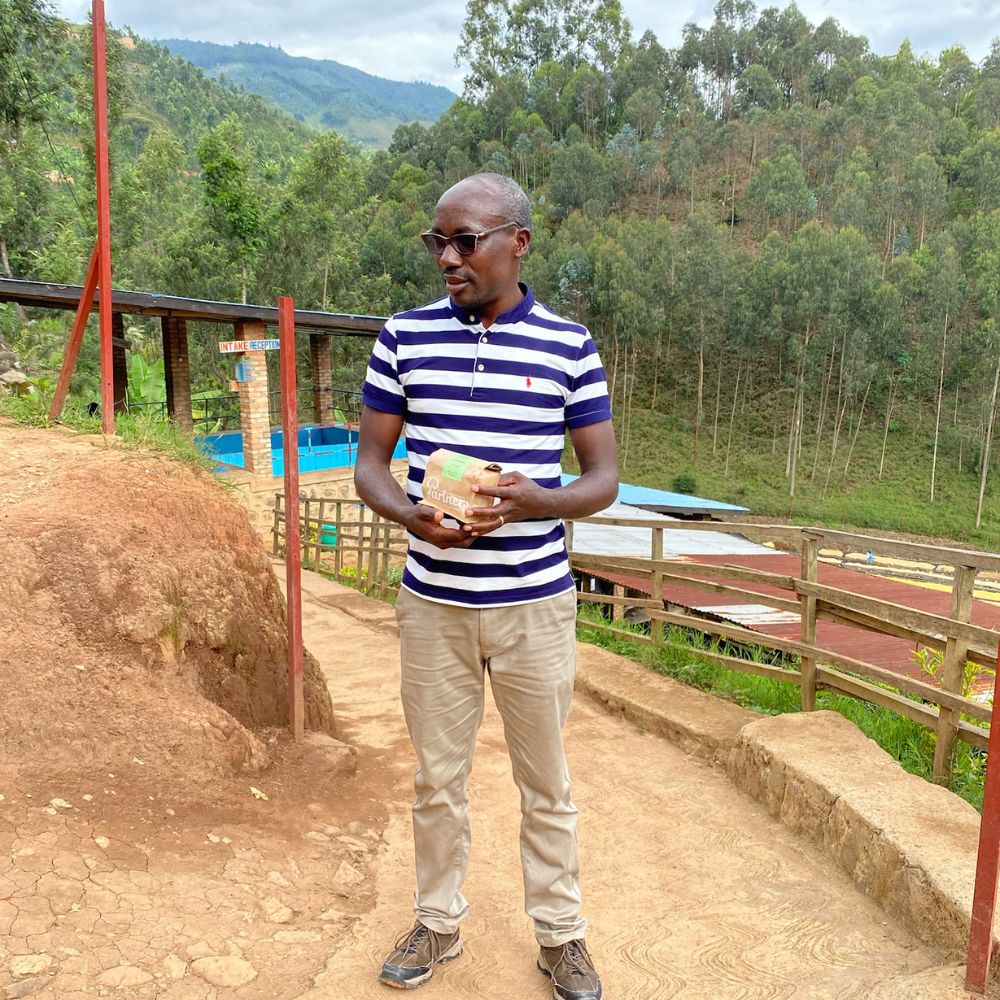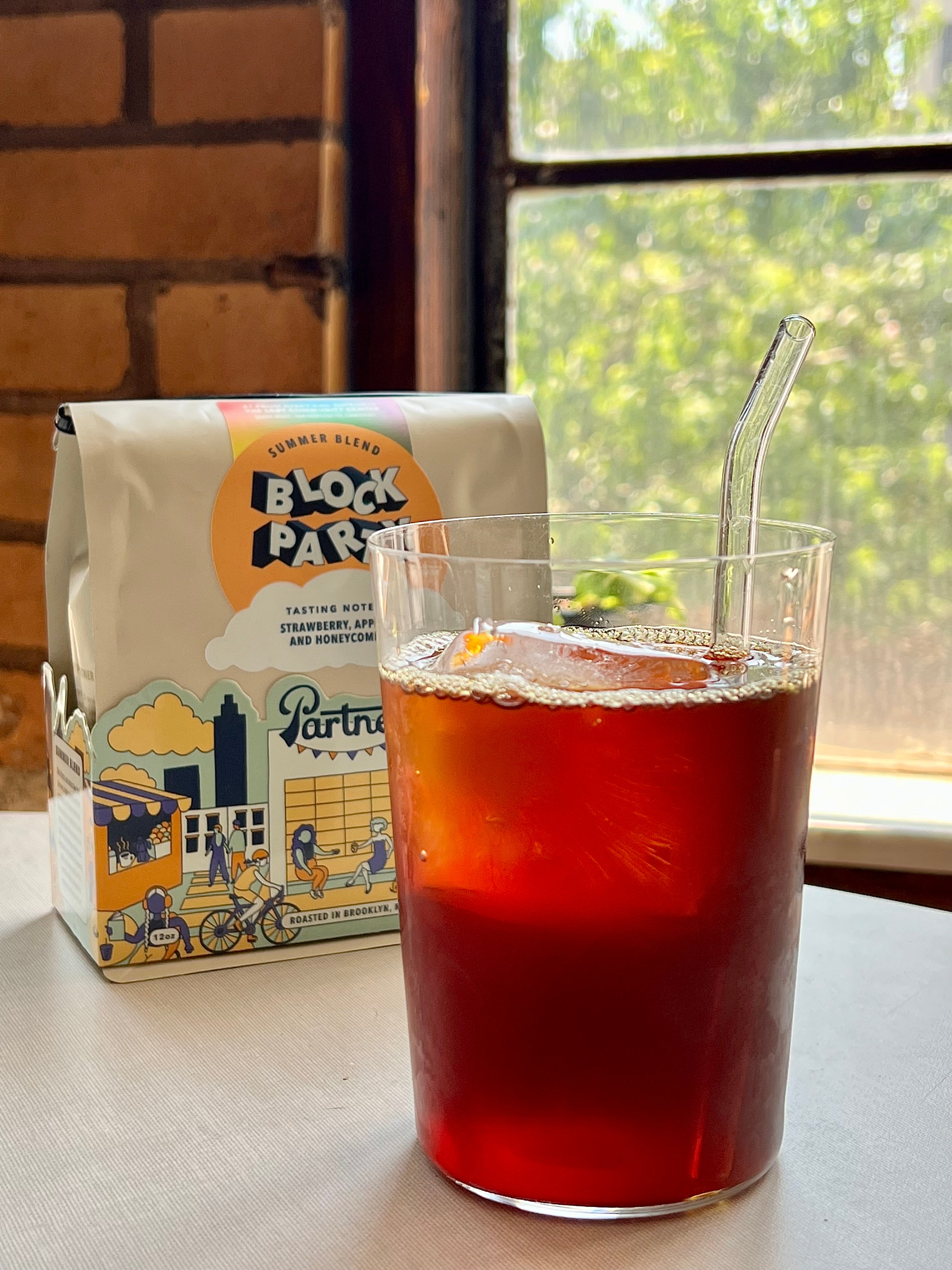The Karambi Washing Station supports more than 700 farmers in Nyamasheke District, Rwanda, just east of Lake Kivu. Coffee farms in this part of the world are incredibly small and stations like Karambi serve the important function of purchasing, processing, and consolidating farmers' production into practical volumes for export.
Karambi's coffee is complex, yet elegant. We taste flavors like dried papaya, apricot, and cranberry with a layered sweetness resembling vanilla and brown sugar.

Nyamasheke District has the highest concentration of coffee washing stations in all of Rwanda. Growing conditions are excellent here, with high elevations, great soil, and favorable rainfall—basically everything necessary to produce the best coffees. Almost everything grown is red bourbon, cultivated on tiny plots averaging less than a hectare each. In contrast with Latin America, single farm coffees are basically unheard of: our 20 bag lot represents the combined annual production of about 57 individual farmers.
Throughout Rwanda, and especially in Nyamasheke, there is high competition between washing stations, and each must accept nearly 100% of the coffee delivered to them. To maintain quality, each station must pay close attention to a meticulous sequence of processing and sorting.


Coffee delivered to Karambi is first mechanically depulped, then fermented for 8-12 hours in concrete tanks. Karambi skips the additional soaking step commonly followed in East Africa—sometimes called a double or Kenya-style fermentation—having found quality to be higher without it.
Once the fermentation stage is finished the coffee is moved to an elongated channel where it is washed and graded. As the channel fills with water, the densest coffee sinks to the bottom as the less-dense coffee floats over wooden slats into the next sections. This quick, simple process separates the coffee into five different quality tiers from highest to lowest density. The most dense coffee represents mature, uniformly ripe fruits and is isolated to create lots like this.

When washing and grading is complete the resulting parchment coffee is "pre-dried" for 12-20 hours under shade, then moved to one of the station's 100 mesh drying platforms. Drying can take anywhere from a few weeks to 60 days depending on the weather. During this time Karambi's staff regularly turn the coffee to promote good airflow and uniform drying.
We had the privilege of visiting Karambi last spring and catching up with Joseph, the station's manager. While production was much smaller this year as a result of weather complications—around 400 metric tons compared to 700 the previous year—we've been delighted with the overall quality.
In partnership with Sucafina, our import partners for much of our business in Africa, we have supported a farmgate initiative that provides secondary, direct payments to producers who deliver coffee to Karambi. This benefits farmers by improving cash flow in the months between harvests while increasing farmers' access to banking.
Ready for a cup of incredible?
Tasting Notes:
Papaya, Apricot, and Brown Sugar
Region:
Nyamasheke District, Western Province
Producers:
780 neighboring smallholders
SOURCE:
Karambi Washing Station







Leave a comment
This site is protected by hCaptcha and the hCaptcha Privacy Policy and Terms of Service apply.